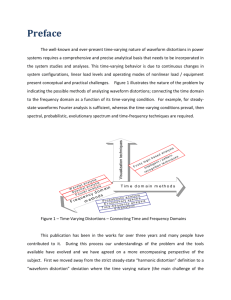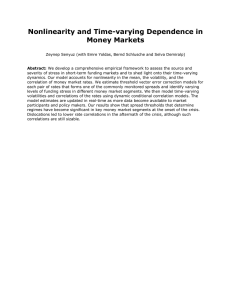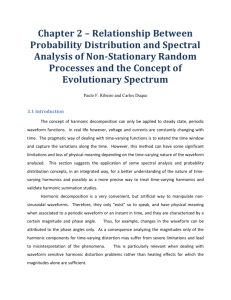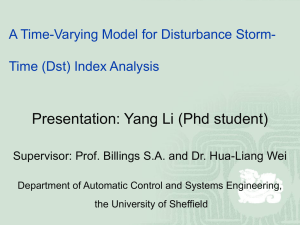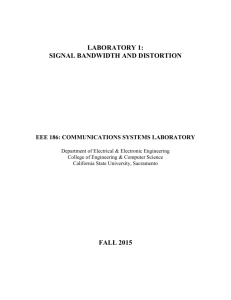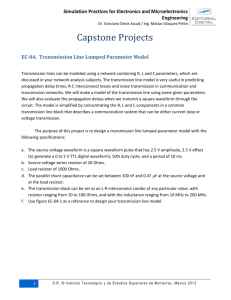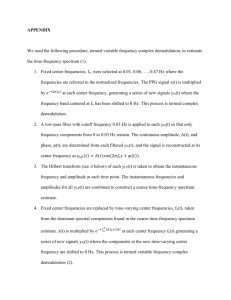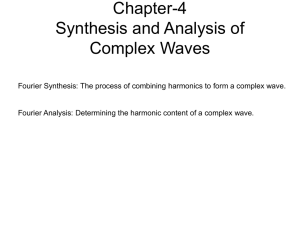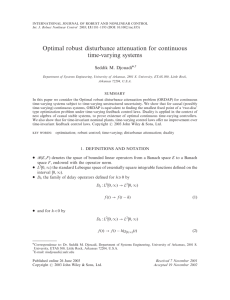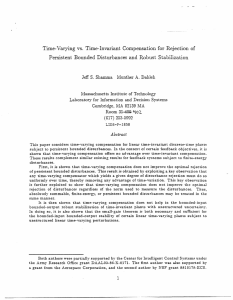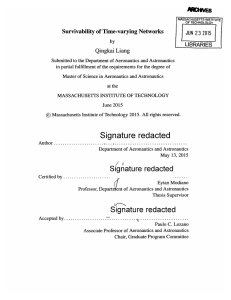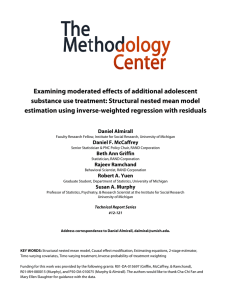PREFACE
advertisement
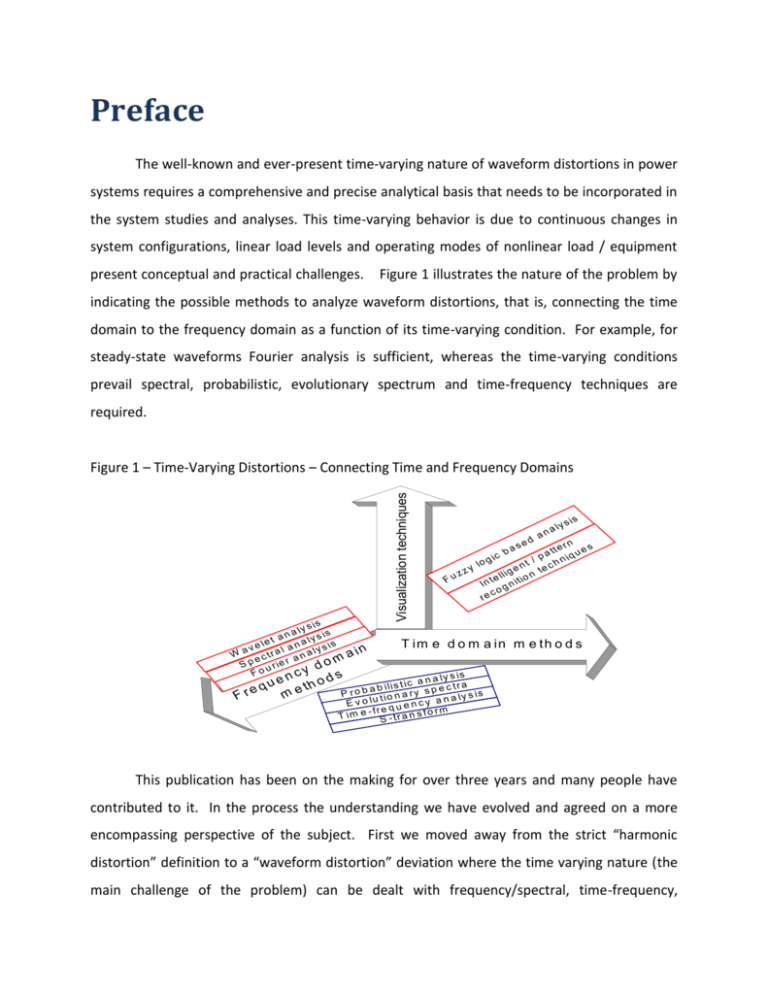
Preface The well-known and ever-present time-varying nature of waveform distortions in power systems requires a comprehensive and precise analytical basis that needs to be incorporated in the system studies and analyses. This time-varying behavior is due to continuous changes in system configurations, linear load levels and operating modes of nonlinear load / equipment present conceptual and practical challenges. Figure 1 illustrates the nature of the problem by indicating the possible methods to analyze waveform distortions, that is, connecting the time domain to the frequency domain as a function of its time-varying condition. For example, for steady-state waveforms Fourier analysis is sufficient, whereas the time-varying conditions prevail spectral, probabilistic, evolutionary spectrum and time-frequency techniques are required. is ly s is na a ly s s le t na i ve l a a ly s a a r W t ec er an m p o S d u ri Fo cy q F re Visualization techniques Figure 1 – Time-Varying Distortions – Connecting Time and Frequency Domains a in is ly s na a d n se s er ba a tt iq u e c p i / n g t o h n y l te c ig e zz e ll it io n t Fu n I n og re c T im e d o m a in m e t h o d s n a ly s is ds t ic a n ue th o a b il is r y s p e c t r a b e o r P na m ly s is o lu t io y ana Ev enc - fre q u n s fo rm a T im e tr S This publication has been on the making for over three years and many people have contributed to it. In the process the understanding we have evolved and agreed on a more encompassing perspective of the subject. First we moved away from the strict “harmonic distortion” definition to a “waveform distortion” deviation where the time varying nature (the main challenge of the problem) can be dealt with frequency/spectral, time-frequency, probabilistic, artificial/computational intelligence methods. Second, several new techniques became available or were applied for the first time to power systems problems and this prompted the contributors to seek better understanding and additional contributions. What seemed a settled issue, that is, that harmonics are steady-state components and the time-varying nature of waveforms could only analyzed by probabilistic methods applied to short intervals rms averages of individual harmonic components, has now being revised. The new signal processing methods based on time-frequency decomposition such as wavelet transform and multi-rate filter methods presented here have allowed us much more precise analyses of the behavior of time-varying waveform distortions and opened up new opportunities for monitoring and investigating power systems phenomena. The publication reviews the nature, analytical concepts, special situations and problems associated with the time-varying nature of waveform distortions (harmonics), suggests solutions and ways to more effectively deal with the problem. The text covers time-varying varying harmonics produced by different sources from single-phase appliances to Multi-Mega Watt power electronics converters. Also analytical aspects related to background distortion, harmonic summation and harmonic impedance are discussed. The time-varying and time-frequency aspects are considered in the establishment of an integrated approach to deal with waveform distortions. Figure 2 below illustrates the big-picture of how stationary, non-stationary and specialnon-stationary signals can be analyzed. Propagating Evolutionary Spectrum Evolutionary Spectrum Spectrogram Multi-Resolution Space-Time Methods Fourier Analysis Fourier Transform Hartley Short-Term Fourier Windowed Fourier Music Esprit Kalman Picture Graph PDF Spectrum Principal Component D. Independent Component Blind Separation High Order Statistics Kalman Garbor Wavelet S-Transform Hilbert Prony Neural Nets Fuzzy Logic Fractals Space-Time Processing Spectral Time-Frequency Statistical Stationary Signals Intelligent Graphical Non-Stationary Signals Spatial Non-Stationary Signals I would like to acknowledge the invaluable contribution of all authors and in particular to Yahia Bagzouz, Alfrdo Testa, Roberto Langella, and Tom Ortimyer, for helping with making this publication more readable and useful to the power sector and in particular to those who deal with harmonics and want to understand more clearly the mechanisms of generation and ways analyze them and design systems more cost/performance effective systems. I also would like to make a special mention to Dr. Robert Morrison who in the early eighties became one of the foremost influential researchers in this subject and the use of probabilistic methods. I would like to thank the Center for Advanced Power Systems at Florida State University, and New Mexico State University for funding some of my time for preparing and editing the chapters of this text. Finally, I would like to thank my wife for her encouragement, support and resignation for canceling some of our kayak trips to work on the demanding but enjoyable effort.
